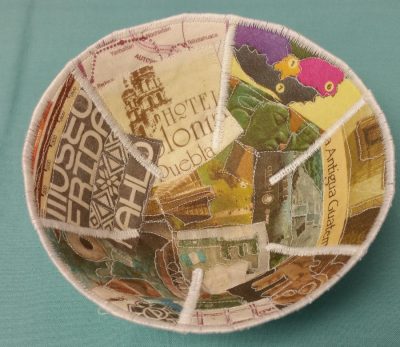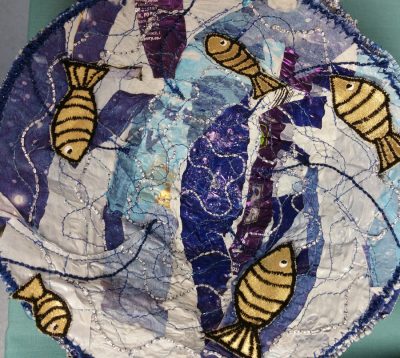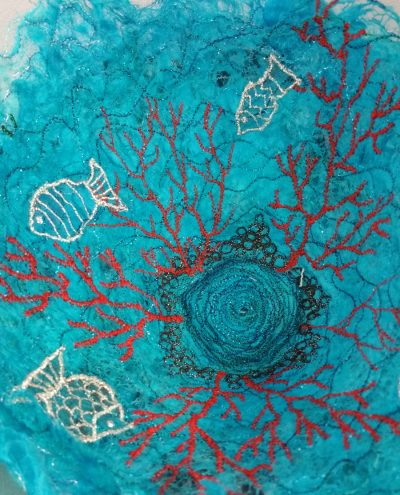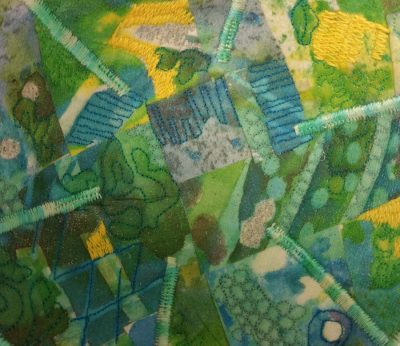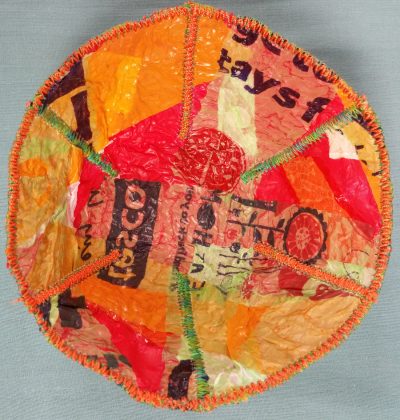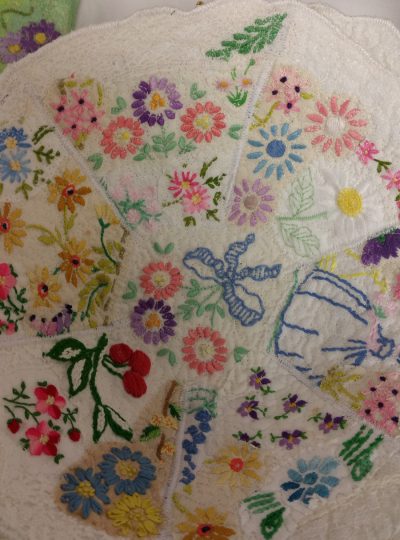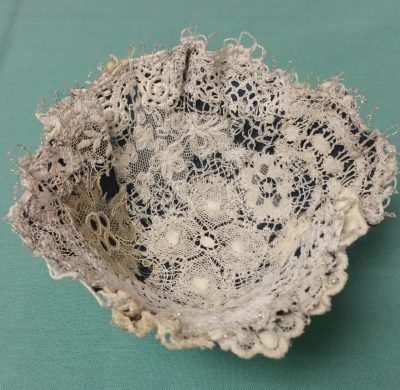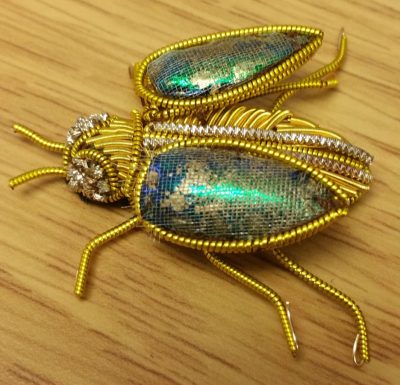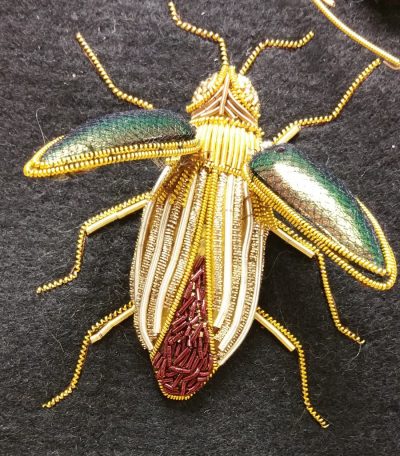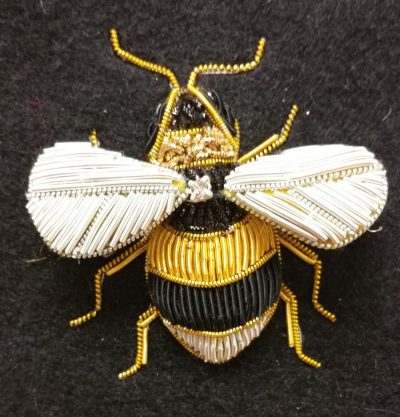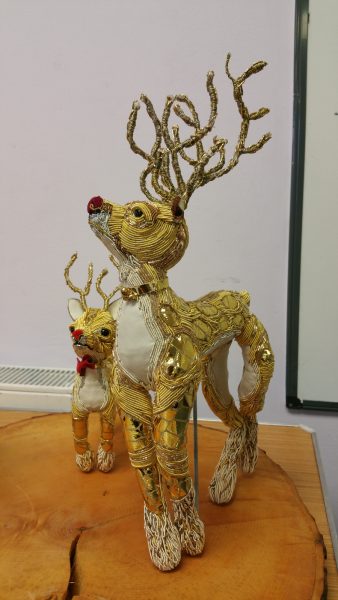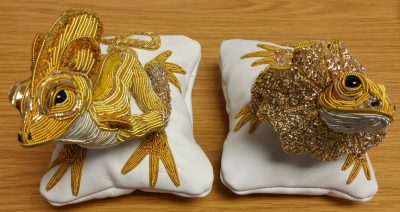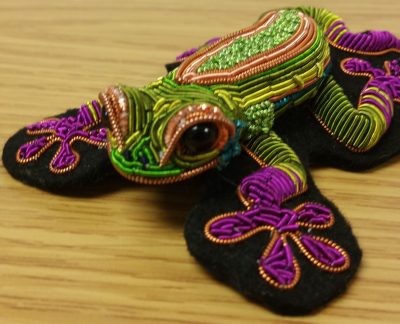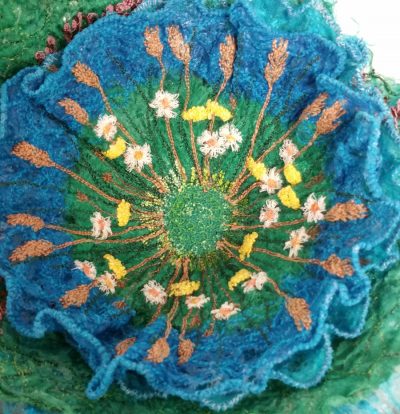 When Gill Denyer came to talk to the branch, she brought a very wide range of her work with her to illustrate her talk. Like many of us, Gill started her textile journey in the 70’s, when ‘home-made’ was the norm and was driven by thrift. Gill always enjoyed making things, and she showed us photos of her 70’s dyed sheets and home-made dungarees. The ‘shoeboxes’ in the title refer to the rooms she used to make out of decorated shoeboxes, complete with matchbox chests of drawers etc.
When Gill Denyer came to talk to the branch, she brought a very wide range of her work with her to illustrate her talk. Like many of us, Gill started her textile journey in the 70’s, when ‘home-made’ was the norm and was driven by thrift. Gill always enjoyed making things, and she showed us photos of her 70’s dyed sheets and home-made dungarees. The ‘shoeboxes’ in the title refer to the rooms she used to make out of decorated shoeboxes, complete with matchbox chests of drawers etc.
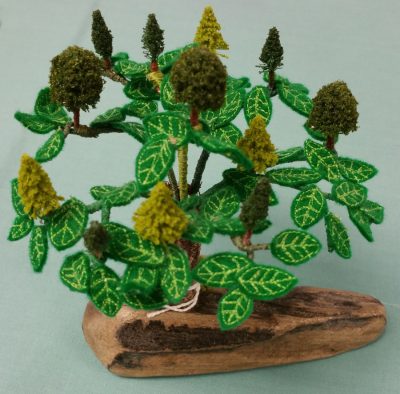 Textiles were part of the ‘background’ to Gill’s life for many years, alongside her training as a biologist, and her marriage and raising a family. Making children’s clothes was a pleasure. Her family always went in for fancy dress in a big way and she was called on to make wonderful fancy dress outfits.
Textiles were part of the ‘background’ to Gill’s life for many years, alongside her training as a biologist, and her marriage and raising a family. Making children’s clothes was a pleasure. Her family always went in for fancy dress in a big way and she was called on to make wonderful fancy dress outfits. 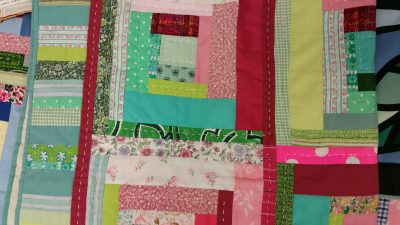
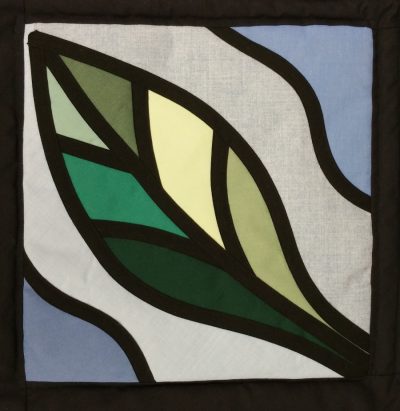 She worked for some years as a dinner lady and then a teaching assistant, while carrying on with her own textile work at home. She did some patchwork and quilting, but felt that hand-stitching was not her main interest. A change of job to textile technician introduced her to the work that A Level Texile Art students were doing, and she decided that she wanted to do something similar. Gill then signed up for a machine embroidery city and guilds course with Pam Watts. This started her on her new textile journey. She experimented with all sorts of materials and techniques, and particularly enjoyed using textured surfaces such as tyvek. She also discovered stitching on dyed ‘silk caps’ which led her to creating machine-stitched bowls. She brought a big collection of bowls with her, a few of which are shown at the end of this post (click to enlarge).
She worked for some years as a dinner lady and then a teaching assistant, while carrying on with her own textile work at home. She did some patchwork and quilting, but felt that hand-stitching was not her main interest. A change of job to textile technician introduced her to the work that A Level Texile Art students were doing, and she decided that she wanted to do something similar. Gill then signed up for a machine embroidery city and guilds course with Pam Watts. This started her on her new textile journey. She experimented with all sorts of materials and techniques, and particularly enjoyed using textured surfaces such as tyvek. She also discovered stitching on dyed ‘silk caps’ which led her to creating machine-stitched bowls. She brought a big collection of bowls with her, a few of which are shown at the end of this post (click to enlarge).
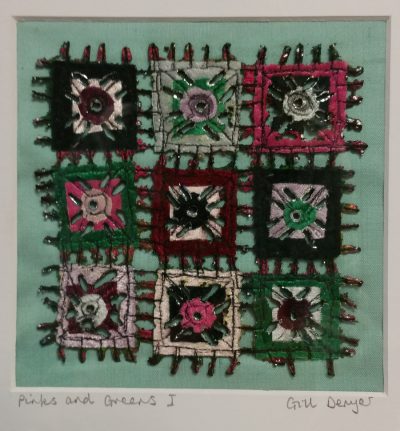 The machine embroidery course closed before Gill could carry on from the Certificate to the Diploma, so she began to go on other workshops and to study the work of other textile artists so that she could carry on learning. One example is the work of Susan Lenz (whose permission was given for this work to be shown by Gill in her talks). Gill started making items to sell, for example brooches, sculptures and books. She joined the textile group ‘Totties’ which stands for ‘Textiles on Tuesdays’ in Guildford, and she developed more skills such as printing and dyeing. More recently she joined the well-known textile group ‘Wey Valley Workshop’ and will exhibit with them in June 2020. Below are some examples of her popular machine-embroidered bowls.
The machine embroidery course closed before Gill could carry on from the Certificate to the Diploma, so she began to go on other workshops and to study the work of other textile artists so that she could carry on learning. One example is the work of Susan Lenz (whose permission was given for this work to be shown by Gill in her talks). Gill started making items to sell, for example brooches, sculptures and books. She joined the textile group ‘Totties’ which stands for ‘Textiles on Tuesdays’ in Guildford, and she developed more skills such as printing and dyeing. More recently she joined the well-known textile group ‘Wey Valley Workshop’ and will exhibit with them in June 2020. Below are some examples of her popular machine-embroidered bowls. 